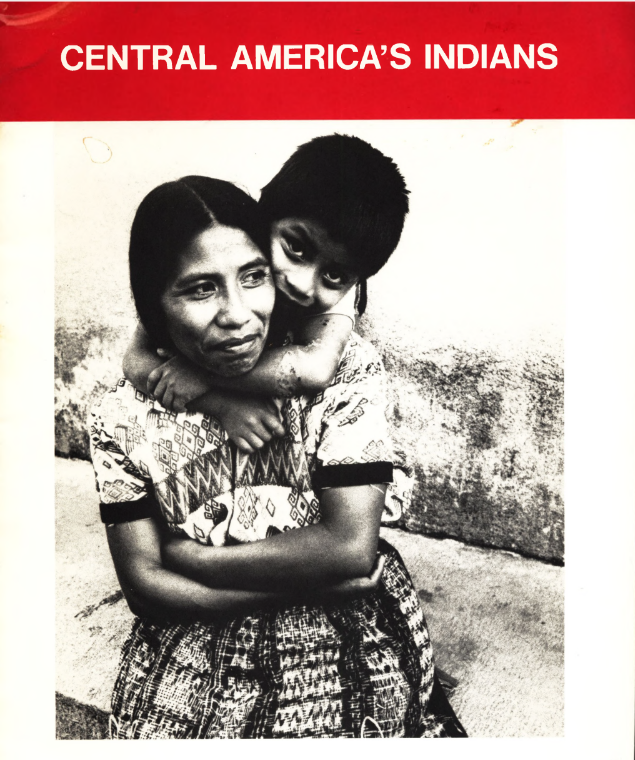Profile
Most of Costa Rica’s indigenous peoples live in the isolated stretches of jungle near the Panamanian border in the south of the country. Twelve ethnic groups exist, although only six languages have survived and are now encouraged by government legislation that allows for bilingual education. The two largest groups are the Cabecares and the Bribris. Compared to the rest of the society the indigenous population generally lacks access to schools, health care, electricity and drinking water.
The Bribri culture has remained vibrant across several generations. This includes maintaining religion, agricultural practices, and respect and coexistence with nature. They continue to use and teach the Bribri language, which further aids in cultural preservation.
Historical context
In 1973 the government set up the National Commission for Indigenous Affairs (CONAI) as the official institution for improving socio/economic and cultural situation of the indigenous population.
Later in 1977, the government passed the Indigenous Law that created the reserves and authorized measures to preserve indigenous language and culture.
CONAI is in dire need of funding and has been subject to the usual government neglect.
The indigenous people only earned their right to vote in 1994.
Current issues
Indigenous peoples are supposed to participate in the management of their own affairs through CONAI but they complain that organization is fragmented and under funded and has not been very efficient or effective.
Many community leaders have complained that the government has not adequately protected indigenous land rights. On many reserves, most of the land has fallen into the hands of non-indigenous Costa Rican ranchers and farmers. In other areas, the reserves are threatened by mining and petroleum exploration, moves which have been sanctioned by successive amendments to the 1977 law.
The main issues affecting indigenous people are therefore encroachment on indigenous traditional lands, environmental degradation, unemployment and the lack of job opportunities on or near reservations. The loss of traditional agricultural practices, malnutrition, and lack of access to credit are also of concern as there is no legal formula for providing guarantees on communal properties. Concomitant to all this is family disintegration due to urban migration of youth in search of work.
The San Jose based organization Sejekto handles some of these complaints and has become the voice for those disillusioned with official organizations. The efforts of this NGO resulted in the 1994 establishment of the first private commercial indigenous bank in Latin America. It is designed to provide credit and other services to indigenous individuals and communities especially producers such as artisans and small-scale farmers.
Indigenous groups in Costa Rica are also using radio to preserve their cultures and traditions, resolve community problems and spread news from their villages in their own languages.
Health care has improved although it is still difficult to get necessary medical attention in remote areas of the country. Several new clinics have been built, but doctors are only available about two days a week. The incidence of mortality from disease is still far higher among indigenous people than the rest of the Costa Rican population. Clean water supply is limited and the principal cause of death among indigenous children is diarrhea.
Since 2000 a significant number of new elementary schools have been constructed however there are only two high schools on indigenous territory. Both of which were built through foreign cooperation. Bilingual education although sanctioned has no direct budget which hampers development of teaching materials and training of the indigenous teachers who are best able to transmit the traditional values and culture.
Indigenous groups in Costa Rica continue to be opposed to the El Diquis hydro-electric project which the Costa Rican Electricity Institute (ICE) plans to build in the southern province of Puntarenas.
The project which the government of Costa Rica recently declared to be in the “National interest” will flood the traditional lands of the Terraba and Chinakicha Nations. It would also have an indirect effect on the Curre, Boruca, Guaymi, Bribi, Ujarras, Cabagra and Salitre Peoples; who together represent nearly one half of Costa Rica’s indigenous population.
Besides causing forced displacement, the project is likely to compromise and infringe upon indigenous beliefs and cultures. There are over 200 historical sites including ancient ruins and sacred grounds with burial areas which would all be destroyed by the flood waters.
Indigenous critics charge that despite being a signatory of both the UN Declaration on the Rights of Indigenous People and ILO Convention 169 the government of Costa Rica failed to consult with affected Indigenous groups in any meaningful manner before considering the project’s viability.
Indigenous organizations such as the Association for the Defence of the Indigenous Rights of the Terraba, claim that what the ICE referred to as formal consultations was more of propaganda campaign to which the community was subjected with the specific aim of deceiving them.
Consequently indigenous activists have called on the government to respect the Rights and Territories of the Traditional Peoples in Costa Rica and stated their intention use every legal recourse to struggle for their lands and cultures.
As of February 2008 several other indigenous, campesino, and environmental groups have announced their support for what is set to develop into a National Movement for Indigenous Rights in Costa Rica.

